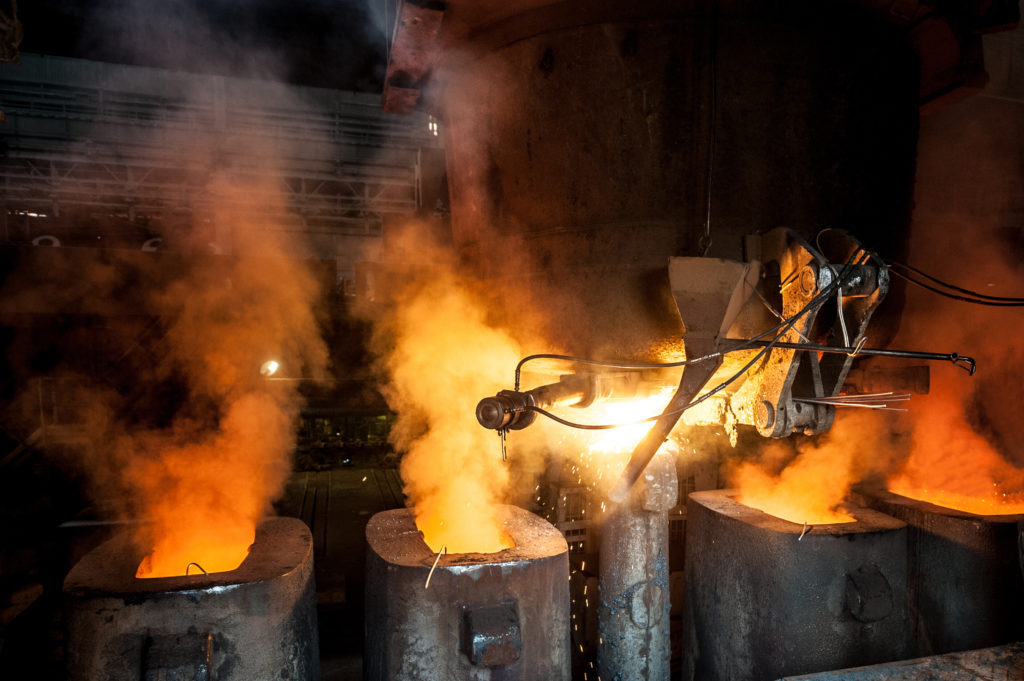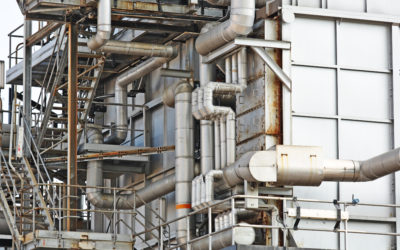The Best Materials to Combat Heat Exchanger Corrosion
Selecting the right materials is essential to the design and longevity of heat exchangers, especially when it comes to fighting corrosion. Heat exchangers are exposed to harsh environments, including varying temperatures, pressures, and corrosive chemicals. This makes corrosion resistance a top priority for power generation, chemical processing, and HVAC industries. One of the most effective solutions to further enhance material protection is HeatX, an advanced surface treatment designed to combat corrosion and extend the life of heat exchanger components.
In this article, we’ll explore the importance of material selection, the common materials used for heat exchangers, and how HeatX offers exceptional surface protection against corrosion.
Why Material Selection is Crucial for Heat Exchangers
Heat exchangers operate under tough conditions, meaning the materials used in their construction must withstand extreme temperatures, corrosive fluids, and high-pressure environments. Selecting the wrong material can lead to premature corrosion, reduced efficiency, and costly repairs. Engineers must evaluate several factors when choosing materials, such as corrosion resistance, thermal conductivity, and mechanical strength.
Key Factors in Material Selection for Heat Exchangers
- Understanding Corrosion Mechanisms: Different types of corrosion, such as pitting, crevice corrosion, and stress corrosion cracking, can affect materials uniquely. Before selecting materials, it’s essential to understand how these mechanisms may occur in a given environment. Materials must be chosen for their specific ability to resist the types of corrosion most likely to develop.
- Corrosion-Resistant Materials: Stainless steel, nickel alloys, titanium, and copper alloys are widely recognized for their excellent corrosion resistance. These materials form protective oxide films or passive layers that guard against corrosive attacks. Each material offers unique benefits based on the environment in which it will be used.
- Compatibility with Operating Conditions: Heat exchangers often encounter extreme conditions. For example, high temperatures may accelerate the corrosion process. Materials like nickel alloys or titanium can handle elevated temperatures and aggressive environments, making them ideal for heat exchangers in chemical or petrochemical industries.
- Galvanic Compatibility: Galvanic corrosion occurs when dissimilar metals come into contact in the presence of an electrolyte. Choosing materials with similar electrochemical properties helps prevent one metal from corroding more quickly than the other.
- Corrosion Testing and Evaluation: Corrosion testing under simulated real-world conditions is essential before finalizing a material. This includes accelerated corrosion tests and exposure tests to predict how materials will perform in the long term.
- Supplementary Measures: Coatings and Corrosion Inhibitors: In addition to selecting corrosion-resistant materials, the use of surface treatments like HeatX can provide an additional barrier against corrosion. Coatings help protect the metal from direct exposure to corrosive elements, enhancing the overall durability of the heat exchanger.
Common Materials Used in Heat Exchangers
- Stainless Steel: Known for its high corrosion resistance, stainless steel is a popular choice in industries that both oxidize and reduce environments. It is often used in water-based applications and food-processing industries.
- Copper and Copper Alloys: Copper has excellent thermal conductivity, making it ideal for applications where fast and efficient heat transfer is crucial, such as HVAC systems and refrigeration.
- Aluminum: Aluminum is lightweight with good thermal conductivity, making it suitable for automotive heat exchangers and air conditioning systems.
- Titanium: Titanium is highly resistant to corrosion, especially in harsh environments, such as marine applications or chemical processing plants.
- Nickel Alloys: Nickel alloys, like Inconel, combine high strength with corrosion resistance, making them ideal for high-temperature environments such as petrochemical and aerospace industries.
HeatX: The Ultimate Solution for Corrosion Protection in Heat Exchangers
While selecting corrosion-resistant materials is critical, applying a surface treatment like HeatX can provide additional protection, ensuring that heat exchangers operate efficiently and last longer.
Here’s how HeatX enhances corrosion resistance in heat exchangers:
- Advanced Corrosion Resistance: HeatX forms a durable barrier on the metal surface, preventing corrosive elements from penetrating and attacking the underlying material. This is particularly beneficial for heat exchangers exposed to harsh environments, with a high risk of pitting, crevice corrosion, and stress corrosion cracking.
- Enhanced Material Durability: By providing a protective coating, HeatX minimizes wear and tear on the heat exchanger, helping to extend its service life. This leads to lower maintenance costs and reduced downtime for repairs.
- Improved Performance Under Extreme Conditions: Heat exchangers in petrochemicals, power generation, and marine environments often face extreme temperatures and pressures. HeatX ensures that materials retain their integrity, even under these demanding conditions, reducing the risk of corrosion-related failures.
- Cost-Effective Maintenance: With HeatX applied, the need for frequent maintenance is significantly reduced. Heat exchangers treated with HeatX are less susceptible to corrosion, meaning fewer repairs and longer operational lifespans—saving companies time and money.
Selecting the right materials is the foundation of designing efficient, durable, and safe heat exchangers. Materials like stainless steel, titanium, and nickel alloys offer excellent resistance to corrosion, but in environments with aggressive conditions, surface treatments like HeatX are essential for added protection. HeatX helps safeguard heat exchangers from the damaging effects of corrosion, ensuring long-term performance and reliability.
By combining the right material selection with HeatX surface treatment, industries can significantly enhance the durability and efficiency of their heat exchangers, reducing costs and improving operational efficiency. Learn more about HeatX and its benefits with the experts.



